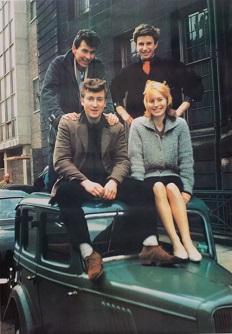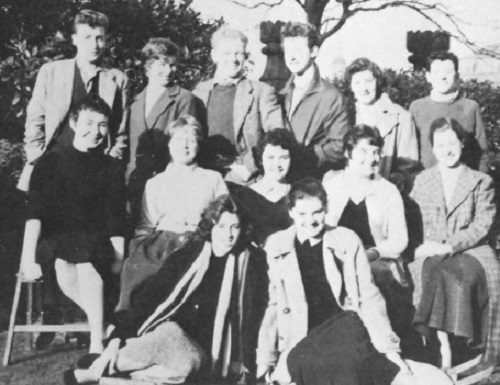John Lennon's Art College days
How one lost student found an education beyond exam results, sparking a change in the world of music forever.

Lead image features John Lennon on Hope Street during his time at art school.
1957 was a pivotal year for John Lennon, he played Woolton Parish Church Garden Fete on 6th July 1957 with his skiffle group from school, The Quarrymen, where he met the 15-year-old Paul McCartney. This event would eventually shape both their lives, and the lives of millions of others, but it would take Hamburg and a damp cellar in Liverpool to facilitate the birth of a new consciousness.
More pressing in the summer of 1957 was what to do about Lennon’s future. After five dismal years at school, Lennon was about to fail all his GCE O Levels. He had very little options open and was looking at a future of ‘brummer striving’, the phrase he used for a life lived in a dull and frustrating job. If he had gone to work, the chances are, there would have been no Beatles. The Quarrymen, would have disbanded, just like the majority of skiffle groups, as school gave way to jobs. However, there was a chink of light for Lennon. He loved art. And he was really talented at it too, this talent manifested itself in one way via a grotesque masterpiece called The Daily Howl, a ‘newspaper’ full of drawings and bits of writings which was circulated round his class for entertainment value.

John Lennon (top left) at Gambier Terrace during his art school days.
His talent at art, the D grade he got in Art in those O Levels, and an interested teacher was enough to get him in to Liverpool College of Art. Lennon walked into that building in Mount Street (located, helpfully, next door to McCartney and Harrison’s school, The Liverpool Institute) in October 1957.
It would be disingenuous to suggest that day marked the start of a successful art school career. Lennon never took it too seriously, and eventually was asked to leave, receiving a ‘red letter’ according to Lennon himself. However, I would argue Liverpool College of Art transformed Lennon’s life. He began there as an angry ‘Ted’, suspicious of his art school peers. Turning up at college wearing drainpipe trousers and other Teddy Boy accoutrements, he terrified, and possibly excited, the gentler art school students. Within months he had met Stuart Sutcliffe, who would become his best friend, and would radically change Lennon’s worldview (also, history suggests, giving name to ‘The Beatles’), and Cynthia Powell who became his first wife and who was with him throughout the Beatlemania years. Just in these two events, art school made a significant contribution to Lennon’s life.
I would go even further and suggest that regardless as to what qualifications art school gave Lennon, it gave him time and opportunities: time to think, opportunities to learn a new sort of life, a more bohemian sort of life. It gave him an education, that can be measured by more than just exam results.
Liverpool College of Art is now a part of Liverpool John Moores University, a pioneering modern civic university which continues to develop the young people of Liverpool and beyond. The university, and particularly through the John Lennon Art and Design Building, continues to celebrate John Lennon and inspire those following in his footsteps.
